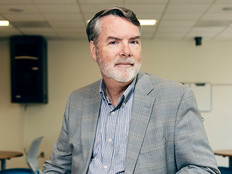Women Around the World Hack for Good
The second annual Microsoft International Women’s Hackathon, which I had the pleasure of coordinating, took place April 25–27 on college campuses around the world. The event is designed to encourage women undergraduates to enroll or remain in computer science programs, thereby preparing the next generation of women leaders in computing.
This year’s Hackathon drew more than 2,000 participants, representing nearly 50 universities in 11 countries. The main event was held at the USA Science and Engineering Festival in Washington, D.C., where we made women’s role in computer science a hot topic of conversation.
The festivities kicked off Friday with a keynote address from U.S. Rep. Susan Brooks of Indiana and Lucy Sanders, CEO of the National Center for Women and Information Technology (NCWIT). They discussed the importance of computer science education and how technology touches all aspects of our lives. They further stressed the importance of diversity in driving innovation, emphasizing the need for greater female involvement in the development of technology.
Challenges
Following the keynote, organizers provided details on the Hackathon’s challenges, which came from two nonprofit organizations.
UN Women, a United Nations organization dedicated to gender equality and the empowerment of women, drove an exercise designed to increase women’s involvement the fields of science, technology, engineering and math (STEM). Meanwhile, Teens Against Distracted Driving hosted a project to encourage people to stop texting while driving. Each organization asked participants to develop a technological solution — an app, social media campaign, website or game — to address these issues and generate awareness.
Mignon Clyburn, one of the five commissioners of the Federal Communications Commission (FCC), then took the stage to discuss the important role women play in innovation and consensus building. She made a powerful plea for women to pursue STEM careers.
“We need young women to be prepared to fill these jobs. ... STEM helps us solve problems, bridges divides, aids us in making real difference in our communities — STEM changes the world,” she said.
Collaboration and Competition
After that, young women around the world began hacking while staying in touch their peers via Lync. Participants demonstrated the collaborative spirit and creative energy that women can bring to computing.
“I’m very competitive, but it is nice to be in an environment where everyone is so collaborative and helpful. Even though I am competing against her, one participant helped me understand what I was doing wrong in my program,” said one participant.
“I really appreciate that the goal is to have a finished application, but it’s great to know that if we don’t finish, we can still pitch our idea and have a month to finish it. This really helps me be more successful, thoughtful and less stressed. I know we will have a fantastic final product,” another participant said.
As the event neared its end, the audience was treated to a thought-provoking panel discussion on the importance of computer science education and the role women can play in creating the technology of the future.
“A lot of young women today don’t understand the creative nature of computing,” said Lucy Sanders of NCWIT. “When you know computer science, you can change the world. You can work in any sector — you can solve all kinds of society’s problems.”
Fellow panelist Bonnie Ross, general manager for Microsoft’s 343 Industries game studio, which produces Halo, added some practical advice.
“If you have a background in CS [computer science], you will get a job when you graduate. So at least get a minor in CS,” Ross said.
Iowa State senior Cassidy Williams confronted the stereotype that only geeks and nerds go into STEM fields
“Today you hear about actors, athletes, musicians — all learning programming to be able to do their own blogs and websites and mobile apps. Everyone is becoming a producer, and it’s becoming cool,” she said.
Innovation on Display
Finally, we heard the winning pitches, one of which, from team TextLite at Montclair University in New Jersey, was presented virtually via Skype. This team — none of whose members were computer science majors — created an innovative app that helps teens to stop texting and driving.
When a teen driver gets into the car, they activate the app — it appears as a red button on the phone’s display — which turns off the phone’s ringer and automatically responds by text or email to any callers, advising them that the phone’s owner is driving and can’t communicate now. Once safely at the destination, the driver hits a green button on the smartphone display to return the device to its normal functions.
The winning solutions will be posted on the Hackathon website by June. In the meantime, check out the videos, pictures and messages from the event at Facebook, Twitter, Tumblr and Pinterest.








